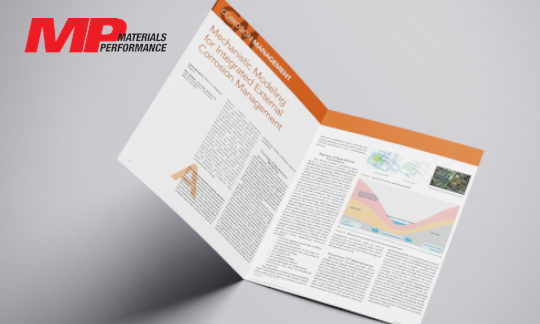
MP Article - Mechanistic Modeling for Integrated External Corrosion
Together with Enbridge, we describe the concept of mechanistic modeling for external corrosion management

Material Performance Magazine - June 2022 Issue
Mechanistic Modeling for Integrated External Corrosion Management
Christophe Baete - Elsyca NV
Paul Murray - Enbridge Operational Services Canada Inc.
Pipeline integrity management requires corrosion growth rate calculations that must be derived from consecutive external corrosion direct and inline inspections. This conventional approach is based on indirect measurements (structure-to-electrolyte potentials) and post-mortem (excavations, feature mapping) assessments limiting an operator's capabilities for proactive maintenance in a most cost-effective and timely manner.
With the increasing amount of high-voltage power line corridors, pipeline crossings, and transit systems, interference threats on pipeline assets are more common. This result sin a higher risk of accelerated corrosion with poor notification to the pipeline operator, as third-party operational conditions may unexpectedly change.
